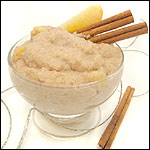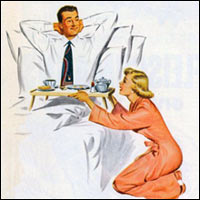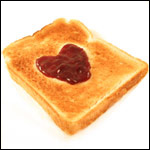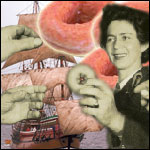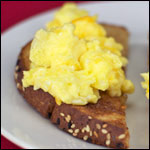
Perfect Scrambled Eggs
By Mr BreakfastNo cheese. No overt flavorings. Just eggs and what it takes to make them taste and look like great eggs.
Skip the story and go straight to the recipe.
In the last two weeks, I've eaten a LOT of scrambled eggs. I've gone through book after book, dozens of articles and scoured the world via restaurant and the internet to find the perfect recipe and method to create what - for all appearances - would seem like the easiest dish in the world to make.
The truth is that scrambled eggs are easy to make. Unfortunately, they are also the easy to make WRONG. At a root level, scrambled eggs are simply beaten eggs which are fried and - for lack of a better word - scrambled. But like most things that are simple (take love and martinis as examples), people have found ways to make them needlessly complex.
Click here to go directly to the recipe for perfect scrambled eggs.
Read on to see the trial and error - the pain and glory - that was involved in deriving the recipe.
What NOT To Add






What NOT To Do
DON'T beat egg whites until stiff peaks form
With or without added ingredients like sugar and cream of tartar, the result of scrambling looks like a big dollop of melting Crisco crossed with cottage cheese.
DON'T stir eggs slowly for an extended period
I came across one recipe that actually instructed to stir the eggs in the fry pan (heated at your stove's lowest setting) with a wooden spoon for 30 minutes.
First of all, the eggs didn't set after 30 minutes at the lowest heat setting. I tried once more at a slightly higher setting. After 10 minutes, the eggs began to show subtle signs of setting. I continued to stir the eggs in the pan for 10 minutes. The result looked more like butternut squash than any eggs I've ever seen. The texture was close to chewy and the extended cooking time seemed to have cooked away all the flavor of egg.
Do It Or Don't - It doesn't Make a Difference
Remove the frying eggs from heat just before the eggs are completely set - In his book, On Food And Cooking: The Science And Lore Of the Kitchen, Harold McGee writes, "(Scrambled Eggs) should be removed from the stove top while slightly underdone since they retain heat and will continue to cook on their own for sometime". No disrespect to Mr. McGee and his excellent book, but multiple practical experiments with this technique yielded no positive (or negative) results. If the eggs were served immediately from the pan, the texture and moisture content of the eggs showed no distinct difference.
Keep eggs at room temperature before scrambling - Kitchen tests showed no significant difference between room-temperature and refrigerated eggs from the same carton. Refrigeration actually deters the growth of salmonella enteritis. Even though salmonella is very rare (1 out of every 20,000 eggs may contain the bacteria), it is advised that your eggs always remain stored in the refrigerator.
The Art of Scrambling - Proper Technique
The Best Way To Beat Your Eggs
One of the most important ingredients in scrambled eggs is hardly ever mentioned... air. It would be nice if we could just dollop a Tablespoon of air into the mixing bowl, but for the time-being, incorporating air into beaten eggs requires good old-fashioned elbow grease (or the electric equivalent).
The more you whisk -- the more air bubbles become trapped in the shaken and unraveling protein of the eggs. As the eggs cook, protein molecules firm-up around the air bubbles resulting in a spongy texture and hopefully full and fluffy scrambled eggs.
The American Egg Board describes well-beaten eggs as "frothy and evenly colored". When your eggs match that description (generally after about 2 minutes) you should stop beating.
Over-beating will completely unravel the protein molecules and destabilize their ability to form a microscopic casing around the air.
In terms of whisking motion, a tilted wheel motion works far better than a vertical stirring motion. A fork works as well as a whisk but requires a slight bit more time and energy.
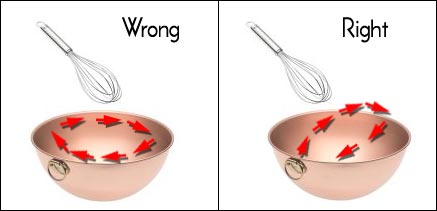
Electric Mixers and Blenders - There's no need to shy away from these time-saving devices if they are used correctly. Electric mixers should be set to a moderate speed that approximates hand-whisking. The same rules of over-mixing apply.
Eggs mixed in a blender should be "blended" for 20 to 25 seconds. Set the mixture aside for a couple minutes before cooking to let the foam settle.
The Best Way To Scramble In The Pan
The actions you take once the eggs hit the fry pan will dictate the size of the scrambled egg pieces (curds). Some recipes suggest stirring the eggs with a wooden spoon immediately as the eggs hit the heated surface. Others direct you to let the eggs start to set before stirring/scrambling. Of the two, the second method results in larger fluffier pieces.
When the first hint of setting appears you should begin to push the eggs around with a spatula. There are opposing schools of thought on how to handle the eggs at this point.
FoodNetwork.com tells us to "push the curds to one side and let the uncooked eggs spread over the surface of the pan."
Martha Stewart suggests: "Using a spatula or a flat wooden spoon, push eggs toward center while tilting skillet to distribute runny parts."
For scrambled eggs that might be described as light and fluffy, Martha Stewart's push-to-the-center technique narrowly edges out the competition.
Getting Hungry?
Before we scramble our brains contemplating the best plate to eat scrambled eggs off of, the texture differentials of eating with a spoon and the ideal temperature of the chair you sit in as you eat... let's get back to the reason we're here. For your breakfast pleasure (and to review)... Mr Breakfast Presents...

This recipe serves 2 hungry people.
6 large eggs
6 teaspoons (1 teaspoon for each egg) low-fat milk
3 dashes of salt (1 dash for every two eggs)
1 Tablespoon butter for frying
Heat a large non-stick frying pan to a setting just above medium. A 12-inch pan works well for 6 eggs. Do not add butter yet. We just want get the pan ready.
In large metal or glass mixing bowl, whisk the eggs with the milk and salt. Beat vigorously for 2 minutes.
Alternatively, you can place the eggs, milk and salt in a blender and blend for 20 to 25 seconds. Allow the mixture to set for a couple minutes to let the foam settle.
Melt the butter in the frying pan. As the very last of the butter is liquefying, add the egg mixture.
Do not stir immediately. Wait until the first hint of setting begins. Start the Martha Stewart scrambling technique ("Using a spatula or a flat wooden spoon, push eggs toward center while tilting skillet to distribute runny parts.")
Continue this motion as the eggs continue to set. Break apart large pieces as they form with your spoon or spatula. You will come to a point where the push-to-center technique is no longer cooking runny parts of the egg. Flip over all the eggs. Allow the eggs to cook 15 to 25 seconds longer. Transfer eggs to serving plates. Add salt and pepper to taste.
A note about milk and water: Soy milk works effectively in the recipe. Whole milk lends an overly milky taste to the eggs. No-fat milk and water can both be used in place of the low-fat milk but the creamy texture of the finished product is reduced.

Cream of tartar is an acid powder. Combined with baking SODA it makes baking POWDER. It's placement in scrambled egg recipes stems from its valued use in dessert recipes. The acidic cream of tartar acts to stabilize egg white when they are beaten to form peaks - as in meringues. I had already written the note "Cream of tartar belongs in dessert not breakfast" before I'd tried the recipe. I couldn't have been more wrong.
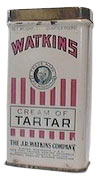 The recipe I followed instructed using 1/8th teaspoon of cream of tartar per every 2 eggs - no other ingredients - and beat for at least a minute.
The recipe I followed instructed using 1/8th teaspoon of cream of tartar per every 2 eggs - no other ingredients - and beat for at least a minute.The result was surprisingly good. The cream of tartar brought out a richer yellow color to the eggs and the texture was more porous and cake-like. I repeated the experiment again. This time for comparison, I simultaneously created the same recipe without the cream of tartar. There was no detectable difference in taste, but the texture and color of the eggs with cream of tartar were fuller and more pleasing.
Thanks to this eggs-treamly interesting article, you now have eggs-actly what you need to make eggs-traordinary scrambled eggs. And that's no yolk.
2/26/13 Update: Now that you know the techniques and ingredients to make excellent scrambled eggs, you might want to expand your scrambled eggs repertoire by adding cheese, vegetables, meats and other add-ins. Here's over 100 scrambled egg recipes that take the concepts in this article a step further.
This article was written by Mr Breakfast (aka Eddy Chavey).
The editorial content above may not be reproduced without the written permission of
Home | About | Contact | Breakfast Recipes | The Cereal Project | Site Index | Food Charities | Blog
©2025 MrBreakfast.com
©2025 MrBreakfast.com



